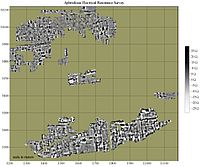Archaeological geophysics

Archaeological geophysics is a way of looking for buried things, like artifacts or buildings, in the ground without actually digging. It’s like taking a picture of what’s underneath the surface of the earth with a special camera.
To do this, scientists use equipment like metal detectors, ground-penetrating radar (GPR) and magnetometers. These tools help “see” the differences in the soil and rock layers, which could indicate the presence of something interesting.
Think of it like this: imagine you’re playing hide-and-seek with your friends and you want to find them, but you don’t know where they are. So, you put on special glasses that let you see through walls and floors. You can see where your friends are hiding and go tag them without having to guess where they might be. Archaeological geophysics works kind of like those special glasses!
By using these tools, archaeologists can create a map of what’s underneath the ground without disturbing the soil. This helps them decide where to dig if they want to uncover something interesting.
So, imagine you’re playing outside and you want to find some buried treasure. You don’t want to spend all day digging holes in random spots, so you use a metal detector to listen for the sound of something buried. When you hear a beep, you know there could be something interesting there. That’s kind of what archaeologists do, but with much fancier equipment!
Archaeological geophysics can help us learn about past civilizations, their structures and even their daily lives. It's like time-traveling without leaving the present day!
To do this, scientists use equipment like metal detectors, ground-penetrating radar (GPR) and magnetometers. These tools help “see” the differences in the soil and rock layers, which could indicate the presence of something interesting.
Think of it like this: imagine you’re playing hide-and-seek with your friends and you want to find them, but you don’t know where they are. So, you put on special glasses that let you see through walls and floors. You can see where your friends are hiding and go tag them without having to guess where they might be. Archaeological geophysics works kind of like those special glasses!
By using these tools, archaeologists can create a map of what’s underneath the ground without disturbing the soil. This helps them decide where to dig if they want to uncover something interesting.
So, imagine you’re playing outside and you want to find some buried treasure. You don’t want to spend all day digging holes in random spots, so you use a metal detector to listen for the sound of something buried. When you hear a beep, you know there could be something interesting there. That’s kind of what archaeologists do, but with much fancier equipment!
Archaeological geophysics can help us learn about past civilizations, their structures and even their daily lives. It's like time-traveling without leaving the present day!
Related topics others have asked about:
